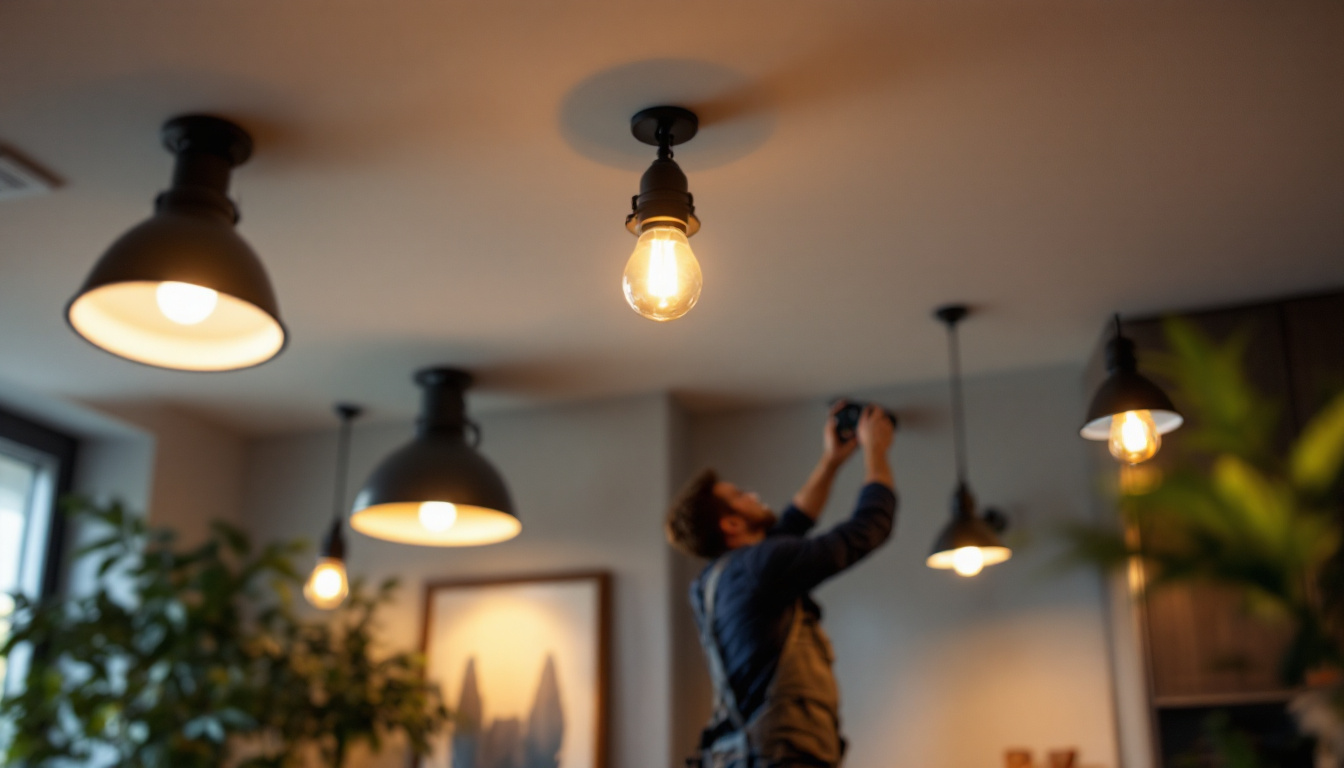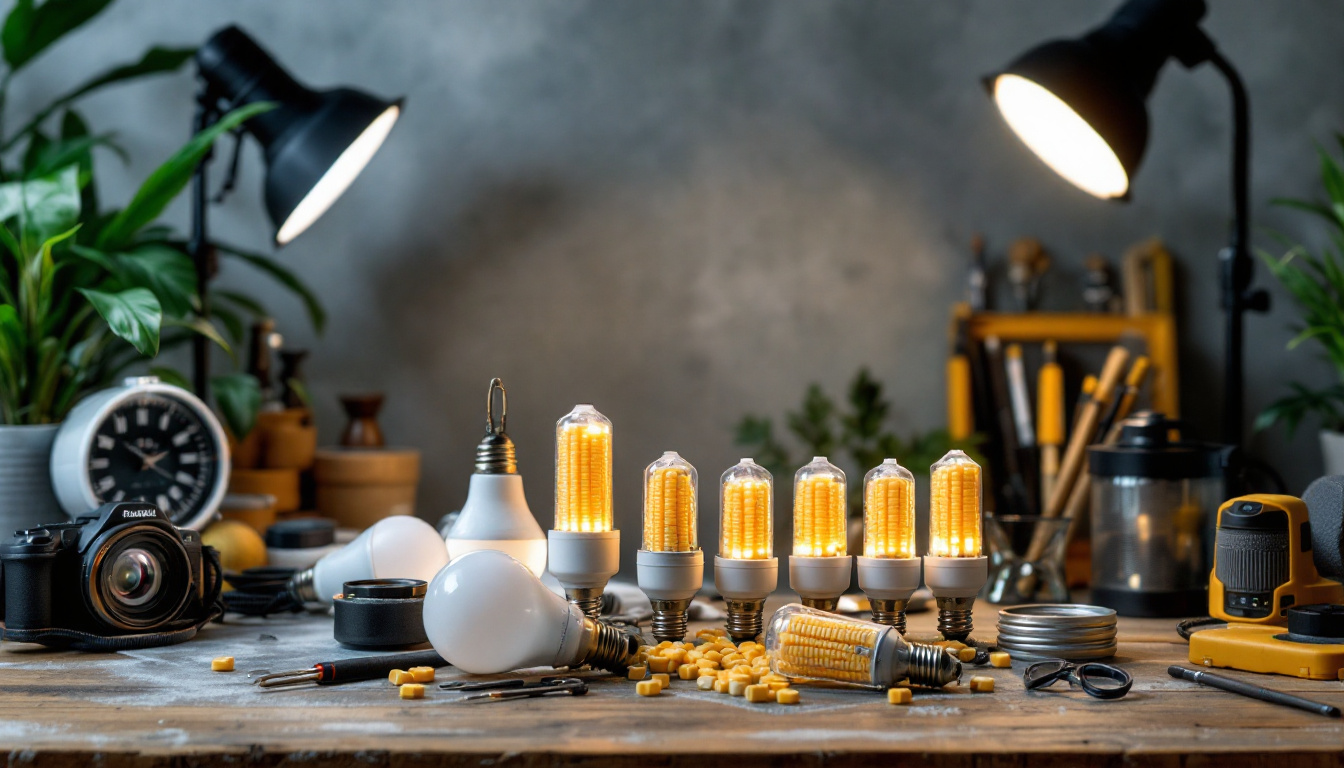
In the ever-evolving world of lighting, pot lights, also known as recessed lights, have gained significant popularity among homeowners and contractors alike. These fixtures offer a sleek and modern look while providing effective illumination. However, understanding the nuances of pot light light bulbs is essential for lighting contractors who aim to deliver the best solutions for their clients. This article aims to demystify pot light light bulbs, covering types, specifications, installation tips, and energy efficiency considerations.
Pot lights are designed to be installed into the ceiling, creating a clean and unobtrusive lighting solution. They can be used in various settings, from residential homes to commercial spaces, and are often employed for general, accent, or task lighting. Their versatility makes them a popular choice among contractors. In addition to their aesthetic appeal, pot lights can enhance the functionality of a space, providing ample illumination without the clutter of traditional fixtures. This makes them particularly well-suited for modern design trends that favor minimalism and open spaces.
There are several types of pot lights available, each designed for specific applications. The most common types include:
When selecting pot light bulbs, contractors should be aware of the various options available. The choice of bulb can significantly affect the overall look and functionality of the lighting. Common types of bulbs used in pot lights include:
In addition to these bulb types, it’s important to consider the color temperature when selecting pot lights. Ranging from warm white to cool daylight, the color temperature can dramatically influence the feel of a room. For instance, warmer tones can create a welcoming environment, while cooler tones are often used in workspaces to enhance focus and productivity. Furthermore, advancements in smart lighting technology have allowed for the integration of dimmable and color-changing LEDs, providing even more flexibility in how pot lights can be utilized in various settings.
When choosing pot light bulbs, several specifications should be taken into account. Understanding these details can help contractors make informed decisions that align with their clients’ needs.
Wattage indicates the amount of energy a bulb consumes, while lumens measure the brightness produced. It’s essential to balance these two factors to achieve the desired lighting effect without wasting energy. For instance, a 10-watt LED bulb can produce the same brightness as a 60-watt incandescent bulb, making it a more efficient choice. Additionally, it’s important to consider the application of the lighting; for example, task lighting in a kitchen may require higher lumens to ensure visibility for cooking, whereas ambient lighting in a living room may benefit from a softer glow.
Color temperature, measured in Kelvin (K), affects the ambiance of a space. Lower Kelvin values (2700K-3000K) produce warm light, creating a cozy atmosphere, while higher values (4000K-5000K) yield cooler, more energizing light. Understanding the desired mood of a room can guide contractors in selecting the appropriate color temperature for pot light bulbs. Furthermore, it’s worth noting that color temperature can influence how colors appear in a room; warmer lights can enhance earthy tones, while cooler lights can make spaces feel more modern and vibrant, thus impacting the overall design aesthetic.
The beam angle of a pot light bulb determines how wide or narrow the light spread will be. A narrow beam angle (15-30 degrees) is ideal for accent lighting, while a wider beam angle (40-60 degrees) is better for general illumination. Selecting the right beam angle is crucial for achieving the desired lighting effect in various applications. Moreover, the placement of pot lights should be carefully considered in relation to the beam angle; for instance, a narrow beam might require closer spacing between fixtures to avoid dark spots, while a wider beam can provide adequate coverage with fewer lights, thus optimizing both energy efficiency and installation costs.
Proper installation is vital for ensuring the effectiveness and longevity of pot lights. Contractors should be aware of several key factors during the installation process.
The type and height of the ceiling can significantly impact the installation of pot lights. For instance, in a standard ceiling, the depth of the pot light housing must be considered to ensure it fits properly. In contrast, sloped ceilings may require adjustable fixtures to direct light where needed.
Before installation, contractors must ensure that the electrical wiring is adequate for the chosen pot light bulbs. This includes checking the wattage ratings and ensuring compatibility with dimmer switches if applicable. Properly securing the wiring and connections is essential for safety and functionality.
The placement of pot lights can dramatically affect the overall lighting scheme. A general rule of thumb is to space pot lights approximately 4 to 6 feet apart for even illumination. However, specific applications, such as task lighting over a kitchen island, may require closer spacing to achieve the desired brightness.
As energy efficiency becomes increasingly important, contractors must consider the sustainability of their lighting choices. Pot light bulbs, particularly LEDs, offer significant advantages in this area.
LED pot lights are renowned for their energy efficiency, consuming up to 80% less energy than traditional incandescent bulbs. This not only reduces electricity bills for homeowners but also contributes to a smaller carbon footprint. Additionally, LEDs have a longer lifespan, reducing the frequency of bulb replacements and waste.
Many regions offer rebates and incentives for the installation of energy-efficient lighting solutions, including LED pot lights. Contractors should stay informed about local programs that can benefit their clients, making the transition to energy-efficient lighting more appealing.
Despite the advantages of pot lights, contractors may encounter challenges during installation and usage. Being aware of these potential issues can help in providing effective solutions.
One common challenge with pot lights, particularly with incandescent and halogen bulbs, is heat buildup. This can lead to safety hazards and reduced bulb lifespan. To mitigate this, contractors should ensure proper ventilation in the housing and consider using LED bulbs, which produce significantly less heat.
Not all pot light bulbs are compatible with dimmer switches. When clients request dimmable options, it is crucial to select bulbs specifically labeled as dimmable. Additionally, using compatible dimmer switches can enhance performance and prevent flickering.
The Color Rendering Index (CRI) measures a light source’s ability to accurately reproduce colors compared to natural light. For applications where color accuracy is essential, such as in art studios or retail spaces, selecting bulbs with a high CRI (above 90) is advisable.
The lighting industry is continually evolving, with new technologies and trends emerging regularly. Staying updated on these developments can provide contractors with a competitive edge.
Smart lighting technology is gaining traction, allowing homeowners to control their pot lights through mobile apps or voice commands. Integrating smart bulbs or systems can enhance the functionality of pot lights, offering customizable lighting scenarios and energy monitoring features.
As LED technology continues to advance, new options are becoming available, including tunable white LEDs that allow users to adjust color temperature throughout the day. This adaptability can improve comfort and productivity in residential and commercial spaces.
Pot light light bulbs play a crucial role in modern lighting design, offering versatility, efficiency, and aesthetic appeal. For lighting contractors, understanding the various types, specifications, installation considerations, and emerging trends is essential for delivering exceptional service to clients. By staying informed and adapting to the evolving landscape of lighting technology, contractors can ensure they provide the best solutions for every project.
In summary, the knowledge of pot light bulbs goes beyond mere selection; it encompasses a comprehensive understanding of their applications, benefits, and challenges. By mastering these elements, lighting contractors can enhance their expertise and elevate their projects to new heights.
Ready to elevate your lighting projects with the best in pot light bulbs? Look no further than LumenWholesale, where we specialize in providing contractors with high-quality, specification-grade lighting solutions at unbeatable wholesale prices. Our commitment to cutting out the middleman means you get the superior products you need at prices that protect your bottom line. With our vast selection that meets rigorous industry standards and the convenience of free shipping on bulk orders, LumenWholesale is your go-to source for reliable, cost-effective lighting. Don’t compromise on quality or value—visit LumenWholesale today and discover the perfect blend of quality, affordability, and convenience for all your lighting needs.

Discover the essential facts about 4 ft LED lights that every lighting contractor needs to know.

Discover how lighting contractors can enhance their projects with LED dimmable 3-way switches.

Discover the transformative power of LED landscaping lights and why staying updated is crucial for lighting contractors.

Discover the ultimate guide for lighting contractors on corn bulbs, exploring their energy efficiency, installation tips, and benefits in various settings.